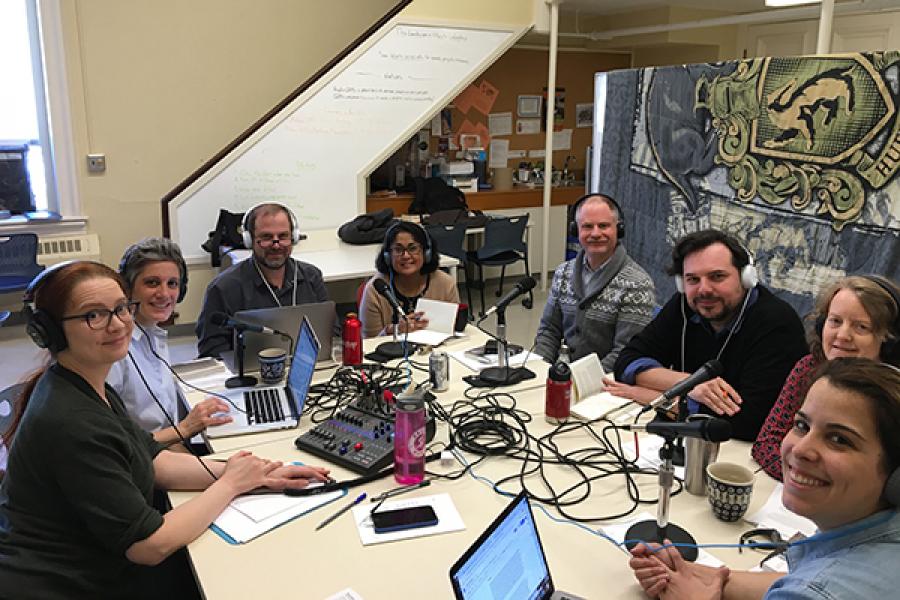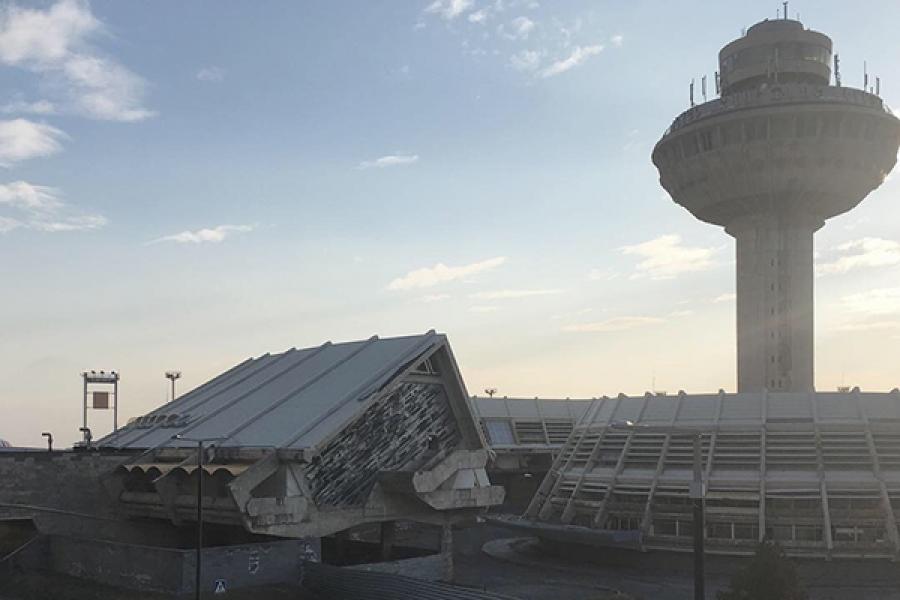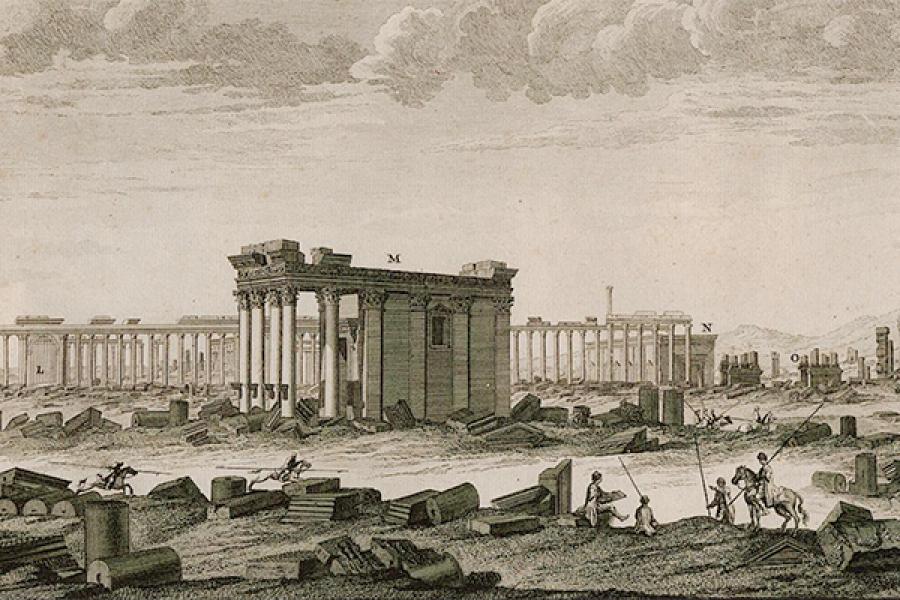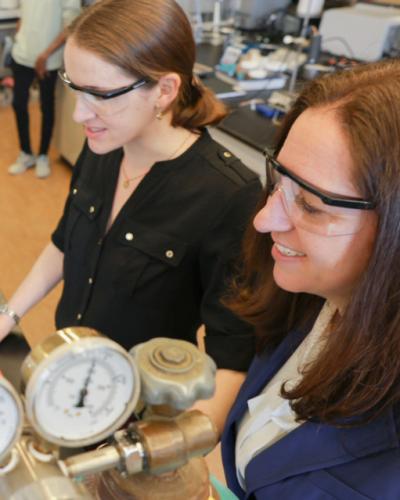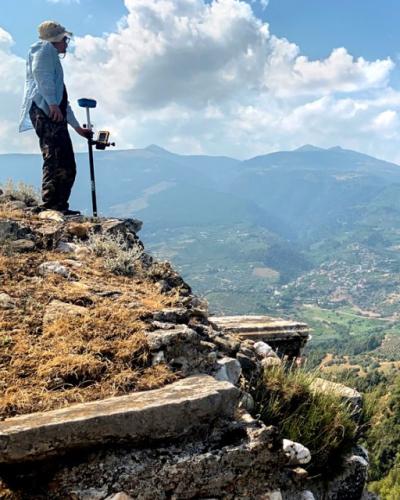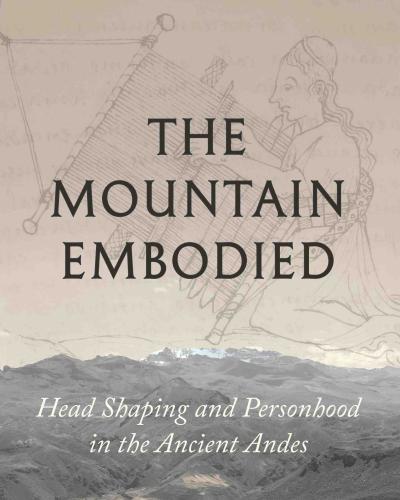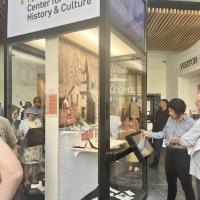On June 10, protesters toppled a statue of Christopher Columbus in front of the state capitol in St. Paul, Minnesota. Similar protests targeted monuments to former slave owners and colonizers in the United Kingdom.
Durba Ghosh, professor of history in the College of Arts and Sciences, and Kelly King-O’Brien, a senior lecturer with the Knight Institute for Writing in the Disciplines at Cornell, affirmed in a co-written essay in Public Seminar that these protesters are “deeply engaged in historical thinking,” neither disrespecting the past nor attempting to erase history.
Ghosh, King-O’Brien, and five other Cornell scholars are well-positioned to speak at this moment on the impermanence of monuments and the unsettling histories that define “heritage.” For a year, they have been studying monuments and heritage together, sharing perspectives on heritage from radically different angles.
Calling their inquiry “Unsettled Monuments, Unsettling Heritage,” this fellowship group last year received a two-year grant from Critical Inquiries into Values, Imagination and Culture (CIVIC), the provost’s Radical Collaboration task force focused on the arts and humanities.
The cohort includes: Benjamin Anderson, associate professor of history of art and classics (A&S); Lori Khatchadourian, associate professor of Near Eastern studies (A&S); Aleksandr Mergold, assistant professor of architecture in the College of Architecture, Art and Planning; Sabrina Papazian, a postdoctoral associate in anthropology (A&S); and Adam T. Smith, professor of anthropology (A&S).
Their efforts include a podcast that debuted this spring and will continue in the fall semester.
“I’m excited about how many strong connections there are between the different disciplines,” said Verity Platt, professor of classics and the history of art, and coordinator of CIVIC. “This is developing into a much bigger conversation that is of critical relevance to current debates over problematic monuments.”
At the heart of “Unsettled Monuments, Unsettling Heritage” is a weekly self-guided seminar. During the academic year, the faculty members shared literature from their various disciplines for reading and discussion. Papazian adapted many of the articles to her Global Heritage course, which she co-taught with Smith. The course attracted students from every one of Cornell’s eight undergraduate colleges and schools in spring 2020.
“In a way it felt like graduate school again,” said Mergold, who studies and practices reuse in architecture, a contemporary version of an ancient practice called “spolia.” He said he has learned from the history-focused scholars in the group “how the meaning and value of built form evolves over time.”
King-O’Brien is looking into how the meaning of monuments evolves over time. She researches the relationship between the establishment of Confederate markers, white supremacy and the Civil Rights Movement in Texas, asking what implications this history has for revising what we remember today.
“Much as the statues were themselves efforts to solidify a particular version of history, their toppling represents an organized effort to recast the way we understand the histories [of] nations, and empires, built on racism, colonialism, and slavery,” King-O’Brien and Ghosh wrote in their Public Seminar piece.
Indeed, this research group’s members are less interested in fixed, stable and authoritative senses of heritage, said Khatchadourian, an archaeologist whose current research focuses more on industrial decay “than on the ways monuments and heritage crystalized over impermanence, forgetting, instability and the vulnerability of political and economic projects.”
To share their findings with a larger audience, the fellowship group launched a podcast, “Unsettled Monuments, Unsettling Heritage,” in March in collaboration with the Cornell Institute of Archaeology and Material Studies. The podcast will continue in the fall and will include conversations with historic preservation practitioners and scholars.
“Heritage is where archaeology and material studies enter into a broader, more public set of discourses,” Smith said, pointing out that heritage is not only an intellectual concept but also a multi-billion dollar industry. “This podcast is our opportunity to engage with those communities as well.”
This collaborative research is reaching students, too. In a semester-long project for Papazian’s and Smith’s Global Heritage course, students developed plans for making an array of sites, institutions, things and traditions into so-called “heritage objects,” like discovering a monument that’s always been there.
One student made a case for creating a heritage object out of a road, Route 61 in the American South, to celebrate blues music and to also interrogate the history of racism. Another student argued that Disneyland is an object of American heritage.
Amusement parks and highways are not places most people think of as heritage in a traditional sense, said Papazian. “But when you start to unpack them, places like these can actually have an impact on broader political, social, and economic issues fundamental to identity and history.”

